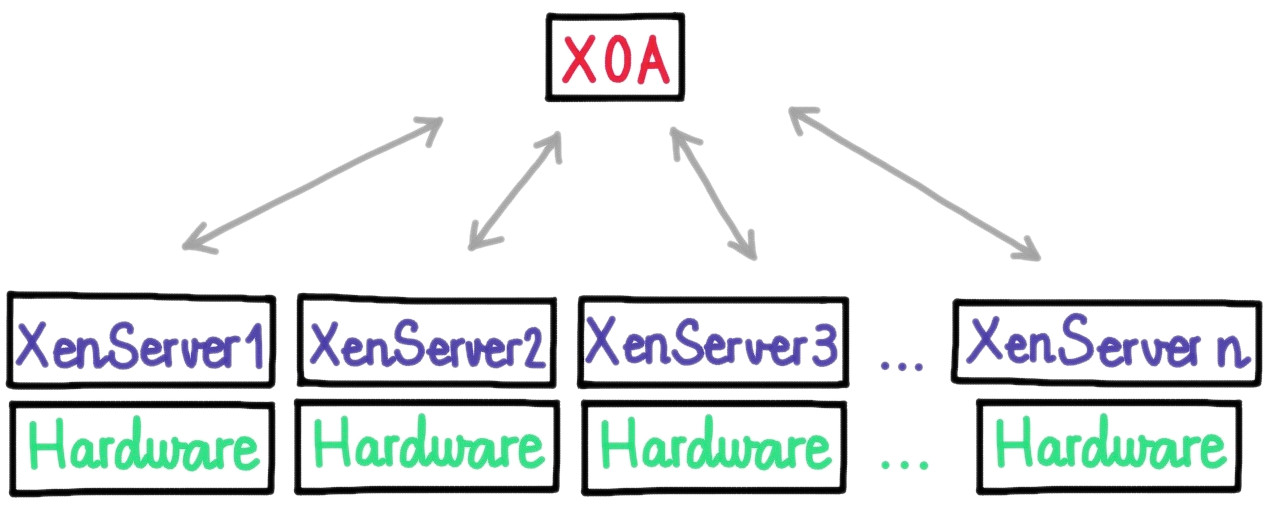I think it's better to regroup a little bit all the recent conversations around XO in this topic (if it's fine?). It will be better for me to have one place to follow here than checking for new topics about it 

Documentation
The first place to go before asking questions! https://xen-orchestra.com/docs/
Quick links:
Quick intro
XO is a kind of middle-ware between you and multiple XenServer hosts. It doesn't require any XenServer setup: it works out of the box.

With XO, you can manage, backup, delegate your XenServer infrastructure.
Business model
If you are a company and you want a turnkey solution with support: XOA which contains:
- a virtual appliance with XO installed (nothing to do)
- an automatic updater (one click to upgrade)
- corporate support and full priority to fix any issue
- QA is done on XOAs, code/dependencies are "frozen" between releases
If you are not interested by the turnkey solution, you can install it from the sources, you'll have ALL XO features, but no XOA features (the previous given list). If the solution begin to go in production in your company, we strongly suggest to get a XOA to avoid any source problem. It's also paid customers which help to continue to work full time on this 
Things to know
- You can complain about the UI, it's already planned to rewrite it from scratch in the next months

- I'm the project leader (and CEO of the company selling it), feel free to ask me anything
- We like to be transparent about how it works to build a project like this. Sharing thoughts is always positive.
- I'm personally convince that more brains are working on a topic, better it is: tell me your needs or ideas, it's always a good thing!
- I've got no problem with critics, go ahead

- We are a very small company, 100% dedicated on XO. We don't have 100 engineer working on it (not even 10)
I'll keep to update this post.
Custom builds
Here, I'll post link to scripts/stuff from people here to create a functional XO installation quickly.
Keep in touch
We try to release every 15 days. I'll write at least one or two blog post per week here: https://xen-orchestra.com/blog/
I put the new articles on Twitter if you want to follow: https://twitter.com/xenorchestra
If you are a XO user, reading the blog is really helpful to catch last features and how to's

 )
)



 ).
).